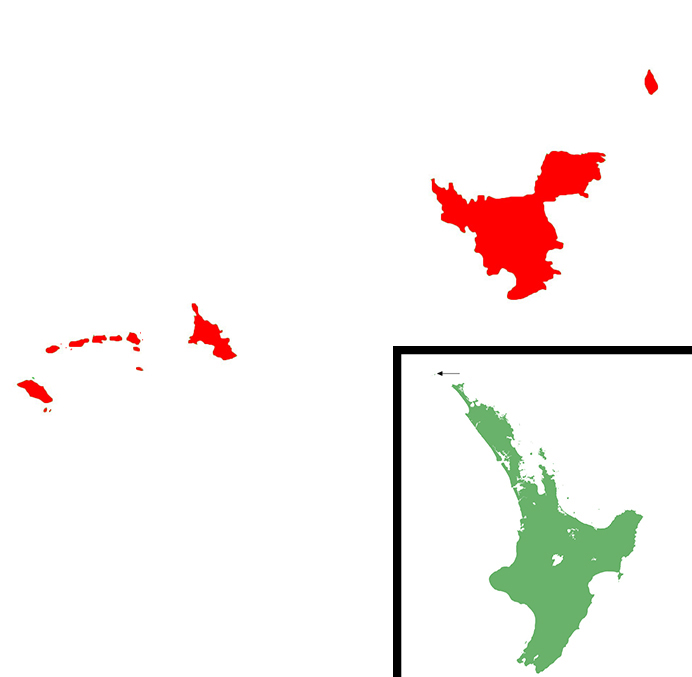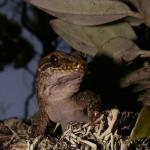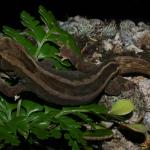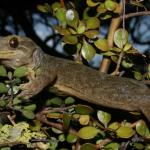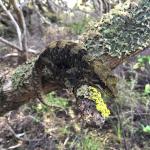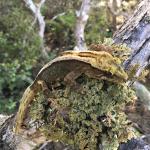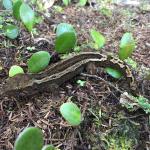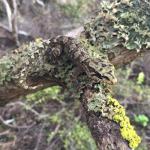- Home
- Herpetofauna Index
- Native
- Dactylocnemis "Three Kings"
Dactylocnemis "Three Kings"
Three Kings gecko
Dactylocnemis "Three Kings"
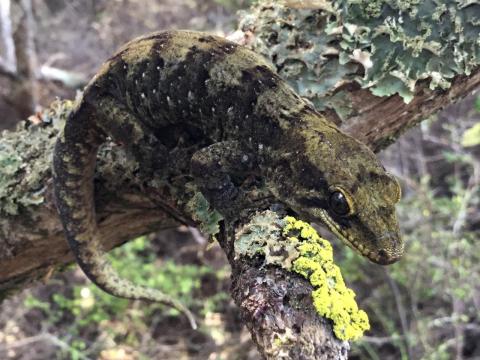
Length: SVL up to 100mm, with the tail being equal to the body length
Weight: up to 29 grams
Description
The largest species in the Dactylocnemis genus, and one of New Zealand's largest geckos. Three Kings geckos are a member of the Pacific gecko group (Dactylocnemis spp.) which became isolated on Manawatāwhi/the Three Kings Islands 60km north-west of Cape Reinga in Northland. They are the only species of gecko that occurs on Manawatāwhi.
Three Kings geckos are large / robust in build and their pattern is highly variable. Rostral scale is in broad contact with the nostril. Dorsal surfaces can be various shades of grey, brown or olive, with lighter markings that may include stripes, blotches and chevrons, which may be drab or strongly contrasting. Occasionally there is a bright mustard-yellow patch on the nape of the neck, there may be additional markings of the same colour continuing down the body and tail. Ventral surface is a uniform grey / pink. Mouth and tongue are pink, tongue often has a grey tip.
Life expectancy
Unknown.
Distribution
Island-endemic. Confined to Manawatāwhi/the Three Kings Islands 60km north of Cape Reinga (Northland). Found on all of the main islands and some of the smaller islands in the Three Kings group.
Ecology and habitat
Three Kings geckos are nocturnal emerging at dusk to forage, but may cryptically sun-bask at the entrance of a retreat. They may be terrestrial or arboreal.
Inhabits forest, scrub or open areas. During the day, Three Kings geckos take refuge in flax, under loose bark on trees, in tree hollows, under rocks and logs, or in creviced rock outcrops.
Social structure
Similar to other species in the genus Dactylocnemis, Three Kings geckos are tolerant of conspecifics and can form large aggregations in retreat sites.
Breeding biology
Three Kings geckos are viviparous, giving birth to two young. Birthing is suspected to occur from around late February through to April, and as with some other species such as the Duvaucel's gecko (Hoplodactylus duvaucelii) females have the potential to breed annually but may instead breed biennially due to a variety of factors.
Diet
Three Kings geckos are primarily insectivorous, but also consume berries / fruit, and nectar from the flowers of native plants.
Disease
Unknown.
Conservation strategy
All islands in the Three Kings group are pest-free, they have always been free of rats or mice, and goats were eradicated in 1946. Three Kings geckos are abundant and occupy their entire known historical range within the group. As such, no specific conservation action is required apart from biosecurity measures to maintain the pest-free status of these islands.
Interesting notes
The Three Kings gecko gets both its common and TAG names from Manawatāwhi/the Three Kings Islands - the only locality for this species in Aotearoa.
Three Kings geckos are members of the genus Dactylocnemis, a group of closely related species which are confined to the North Island of New Zealand, are regionally distributed (including several island-endemic species), and were once all considered as a single highly-variable species - Hoplodactylus pacificus.
The Three Kings gecko belongs to the "northern clade" within the Dactylocnemis genus, with its sister taxa being the Te Paki gecko.
References
Hitchmough, R.A., Barr, B., Lettink, M., Monks, J., Reardon, J., Tocher, M., van Winkel, D., Rolfe, J. (2016). Conservation status of New Zealand reptiles, 2015; New Zealand threat classification series 17. Wellington: New Zealand Department of Conservation.
Jewell, T. (2011). A photographic guide to reptiles and amphibians of New Zealand. Auckland: New Holland Publishing.
van Winkel, D., Baling, M. & Hitchmough, R. (2018). Reptiles and Amphibians of New Zealand: A field guide. Auckland: Auckland University Press, 376 pp.
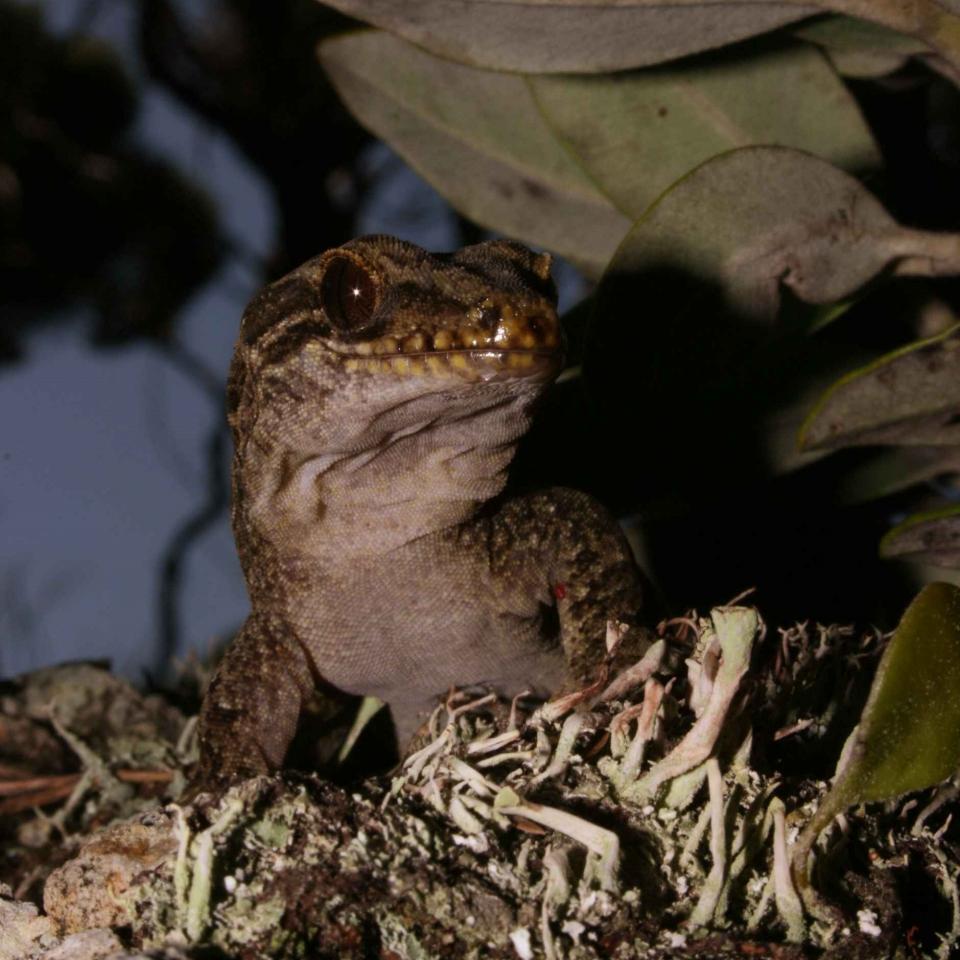
Three Kings gecko in coastal forest (Three Kings Islands, Northland). © Tony Jewell
